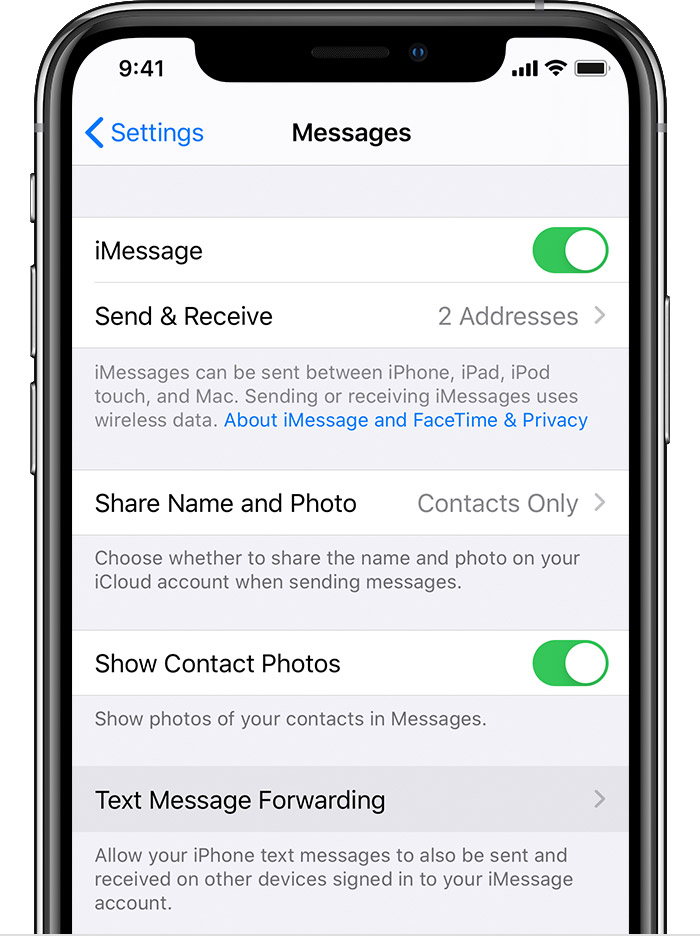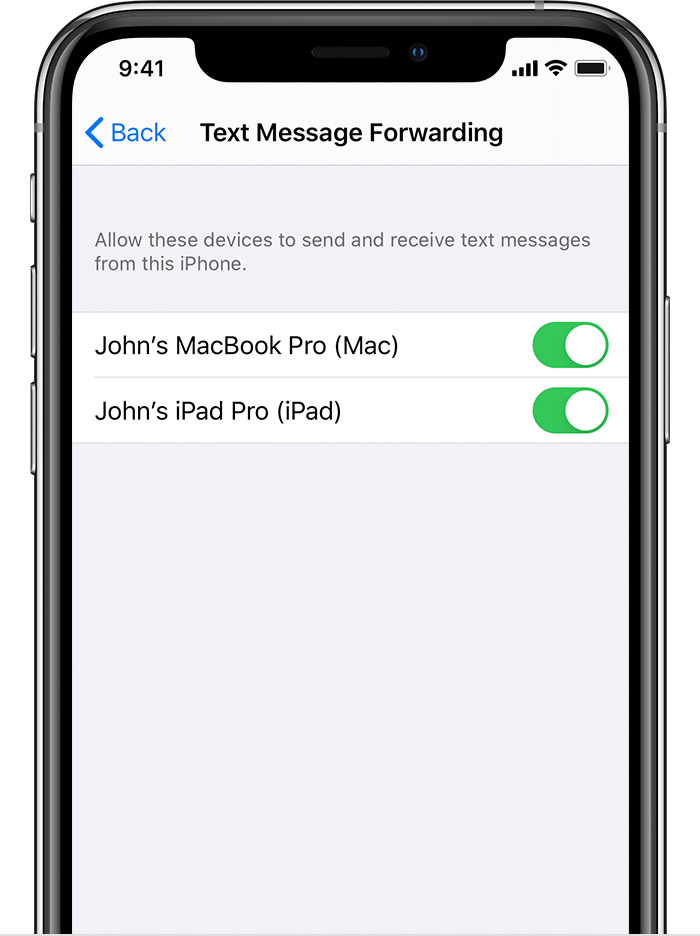Two iPhones, one Apple ID. How to stop then syncing.
How do I stop syncing calls and messages between two iPhones with the same Apple ID?
I use one phone, my husband the other one.
iPhone 11
How do I stop syncing calls and messages between two iPhones with the same Apple ID?
I use one phone, my husband the other one.
iPhone 11
Apple IDs are personal; they shouldn’t be shared any more than you would share a toothbrush. If you share an Apple ID with someone else many bad things will happen. Each user should have their own Apple ID, then you can create Family Sharing→What is Family Sharing? - Apple Support. That way you can share what you want to share and not share what you don’t want to share.
It is OK to share an Apple ID among devices used by one person, such as an iPhone, an iPad and a Mac; in fact, it is a very useful thing to do. But not between devices used by different people.
Here is Apple’s FAQ: https://appleid.apple.com/faq/#!&page=faq. See the 4th bullet item.
Apple IDs are personal; they shouldn’t be shared any more than you would share a toothbrush. If you share an Apple ID with someone else many bad things will happen. Each user should have their own Apple ID, then you can create Family Sharing→What is Family Sharing? - Apple Support. That way you can share what you want to share and not share what you don’t want to share.
It is OK to share an Apple ID among devices used by one person, such as an iPhone, an iPad and a Mac; in fact, it is a very useful thing to do. But not between devices used by different people.
Here is Apple’s FAQ: https://appleid.apple.com/faq/#!&page=faq. See the 4th bullet item.
If you want to keep two iPhones independent of each other then best would be to have two different Apple IDs.
Otherwise, there are basically three types of sharing
iCloud Photos & Messages: iCloud now keeps your entire messages history updated and available on all your devices — even when you set up a new device. Learn how to keep all your messages in iCloud.


To stop getting calls on one of your devices, just turn off the Calls from iPhone setting on that device. Watch the GIF
Watch the GIF below
You can use iPhone Cellular Calls with any Mac, iPhone, iPad or iPod touch that meets the Continuity system requirements. It works when your devices are near each other and set up as follows:
Two iPhones, one Apple ID. How to stop then syncing.